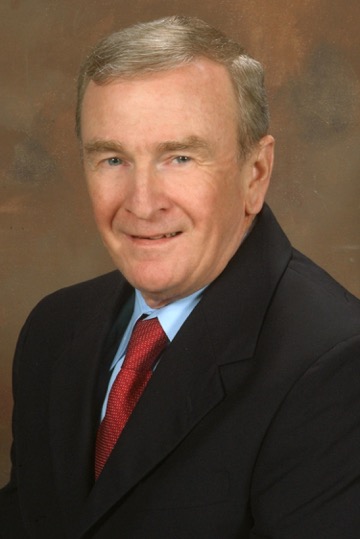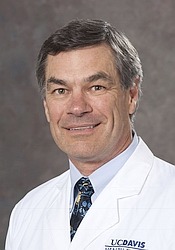



The medical certification process arose from the desire of medical specialties to improve patient care and protect the public by ensuring a body of competent practitioners. The key was the identification of these competent practitioners. This point is tied to the mission of the American Board of Radiology (ABR). The emphasis of board certification has never been on identifying stars, or even top-level practitioners, so boards have never provided gradations of diplomate performance. Rather, the goal is for all diplomates to meet a level of competence that ensures quality care.
The ABR is a member board of the American Board of Medical Specialties (ABMS). Most of the 24 ABMS member boards were organized in the 1930s and 1940s. Certification of medical physicists dates from the same era, with the task first being accomplished by the Radiological Society of North America (RSNA) and then, beginning in 1947, by the ABR. Next year will mark the 70th anniversary of ABR certification of medical physicists.
The task of a board in Initial Certification is to ensure minimal competence of its candidates. Certification processes should be rigorous but not too onerous, and the tradeoff between rigor and difficulty is always a challenge to a board. If the requirements are too onerous, candidates will not be able to achieve them in a practical way; however, if requirements are too simple, the certification will not ensure competency and will not be accepted by the public.
Because of these limitations, the ABMS boards began issuing time-limited certificates and also initiated processes for Maintenance of Certification (MOC). The ABR began implementing its MOC program in 2007.
MOC has four components:In the nine years that have passed, the MOC process has evolved substantially. This expected evolution has resulted in increased relevance and decreased burden on diplomates. Recent major ABR MOC initiatives are described below.
Efforts have expanded the range of self-assessment continuing education (SA-CE) beyond the initial self-assessment modules (SAM) program. The possibilities now include all "enduring" CE, such as continuing education based on journal articles with embedded questions, the AAPM virtual library, and for medical physicists, self-directed educational projects (SDEPs). Medical physicists can obtain all their required SA-CE credits from these sources and thus do not have to depend entirely on meetings where SAM are offered.
All ABR diplomates, including those certified in medical physics, are required to attest annually in myABR to their participation in MOC Parts 1, 2, and 4. However, the data do not need to be sent to the ABR unless the diplomate is selected for an audit. For non-licensure states, the Part 1 process has been simplified to require only one attester, reducing the effort involved. In addition, attestation for Part 1 is only required if the diplomate is audited.
The possibilities for meeting Part 4 requirements have been expanded by creating Participatory Quality Improvement Activities, which include many quality and safety activities that medical physicists often do as part of their usual workday. These can demonstrate the medical physicist's role in quality and safety, while reducing extra Part 4 effort.
The episodic nature of the 10-year MOC exam has an intrinsic limitation in light of the intent to achieve a continuous and more relevant Part 3 assessment. The new ABR OLA method, currently being designed, will be more flexible and more continuous, with real-time feedback provided to the diplomate after each question is answered online. Thus, ABR OLA will combine assessment with feedback. The feedback from the OLA questions can be used as a basis for learning by the diplomate.
Each diplomate will be offered 104 question opportunities per calendar year and will be required to respond to 52 of these opportunities. This feature will give diplomates exceptional flexibility in how frequently they participate.
An initial assessment will occur after a diplomate has responded to 200 calibrated question opportunities, or after five years, whichever comes first. After the 200-question threshold is reached, a rolling summative decision will be made, using the most recent 200 questions.
After reaching the 200-item threshold, a diplomate must achieve a passing summative decision at the March 2nd annual review in order to continue meeting MOC Part 3 requirements. If not, the diplomate will be publicly reported as "not meeting the requirements of MOC" until he or she achieves a passing summative decision prior to the next year's annual review.
Again, the diplomate will have continuous feedback with ample opportunities to correct deficiencies.
The ABR has adopted a program to track diplomate questions and concerns by e-mail, phone, or fax to ensure that a response is provided in a timely manner. The ABR Connections Center is staffed by a knowledgeable team that can answer most questions and routes more complicated queries to an appropriate subject matter expert.
While Initial Certification and MOC require effort to achieve the rigor the process demands, without that rigor, ABR certification would not be respected within the medical physics community and the wider community of radiology and radiation oncology. The level of rigor is noticed by the public, policymakers, and regulators, and it provides strong evidence that medical physicists can regulate their own profession. Without a rigorous process, medical physicists would be vulnerable to requirements imposed by outside groups who would not have a sufficient understanding of the profession. The ABR process is continually evolving to maintain that rigor while, at the same time, the ABR continually attempts to reduce the burden on its diplomates.
Back to Article List Next PreviousWe have noticed that you have an ad blocker enabled which restricts ads served on this site.
Please disable it to continue reading AAPM Newsletter